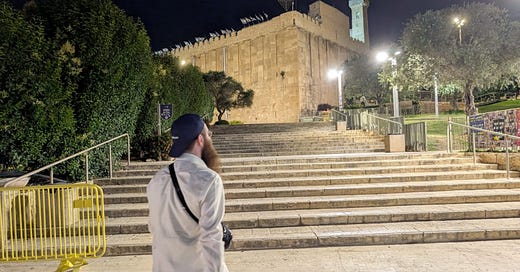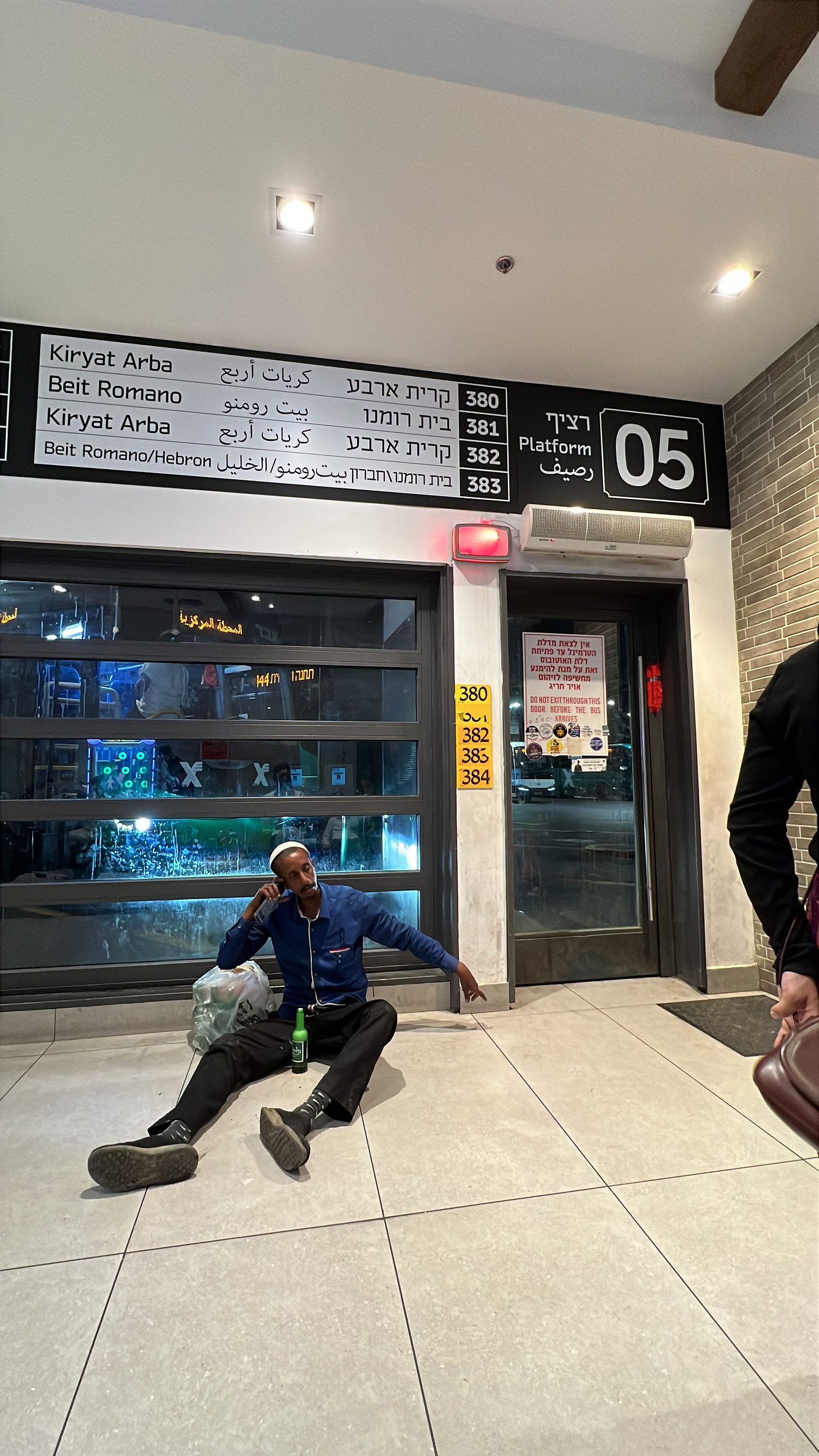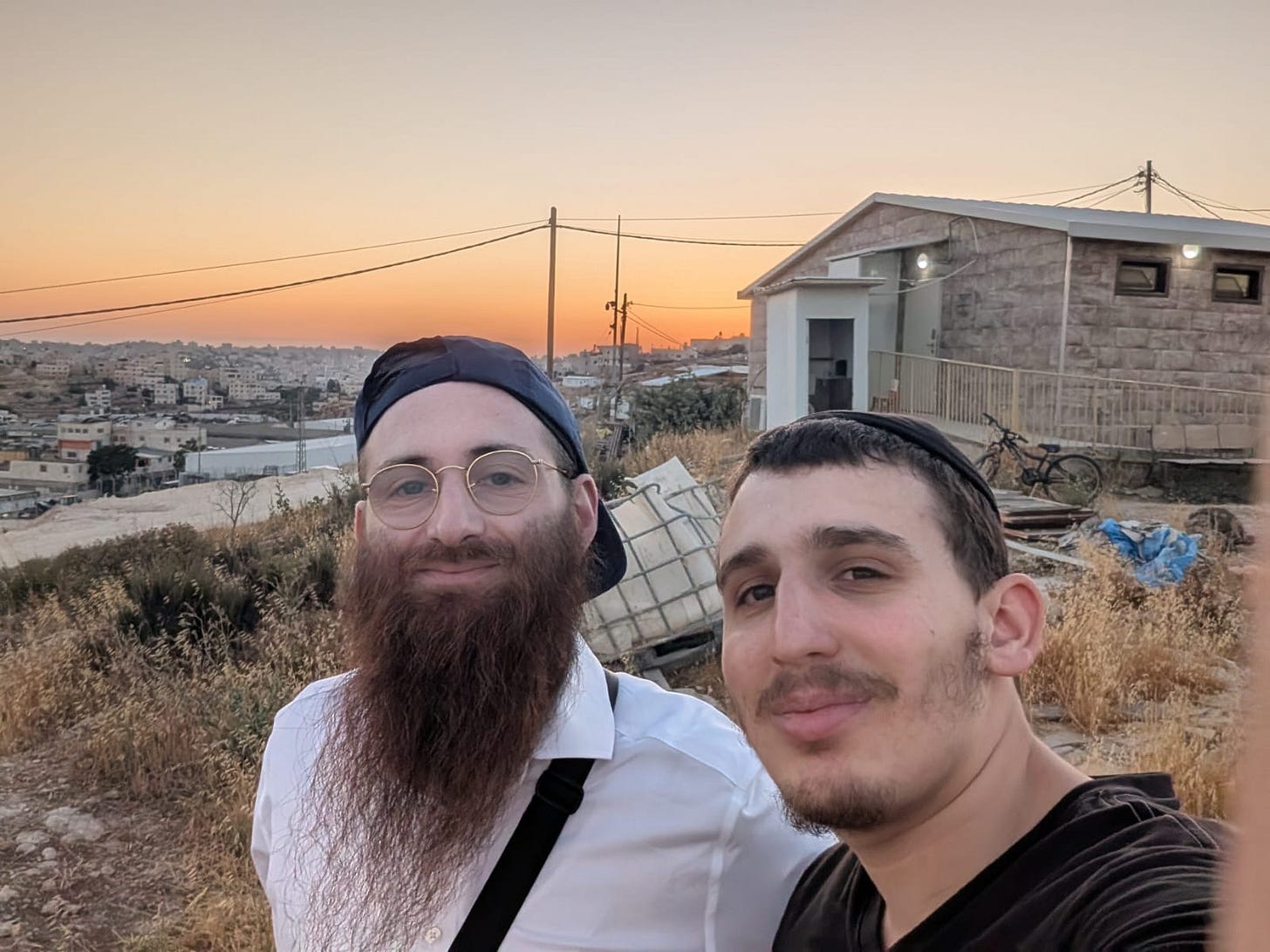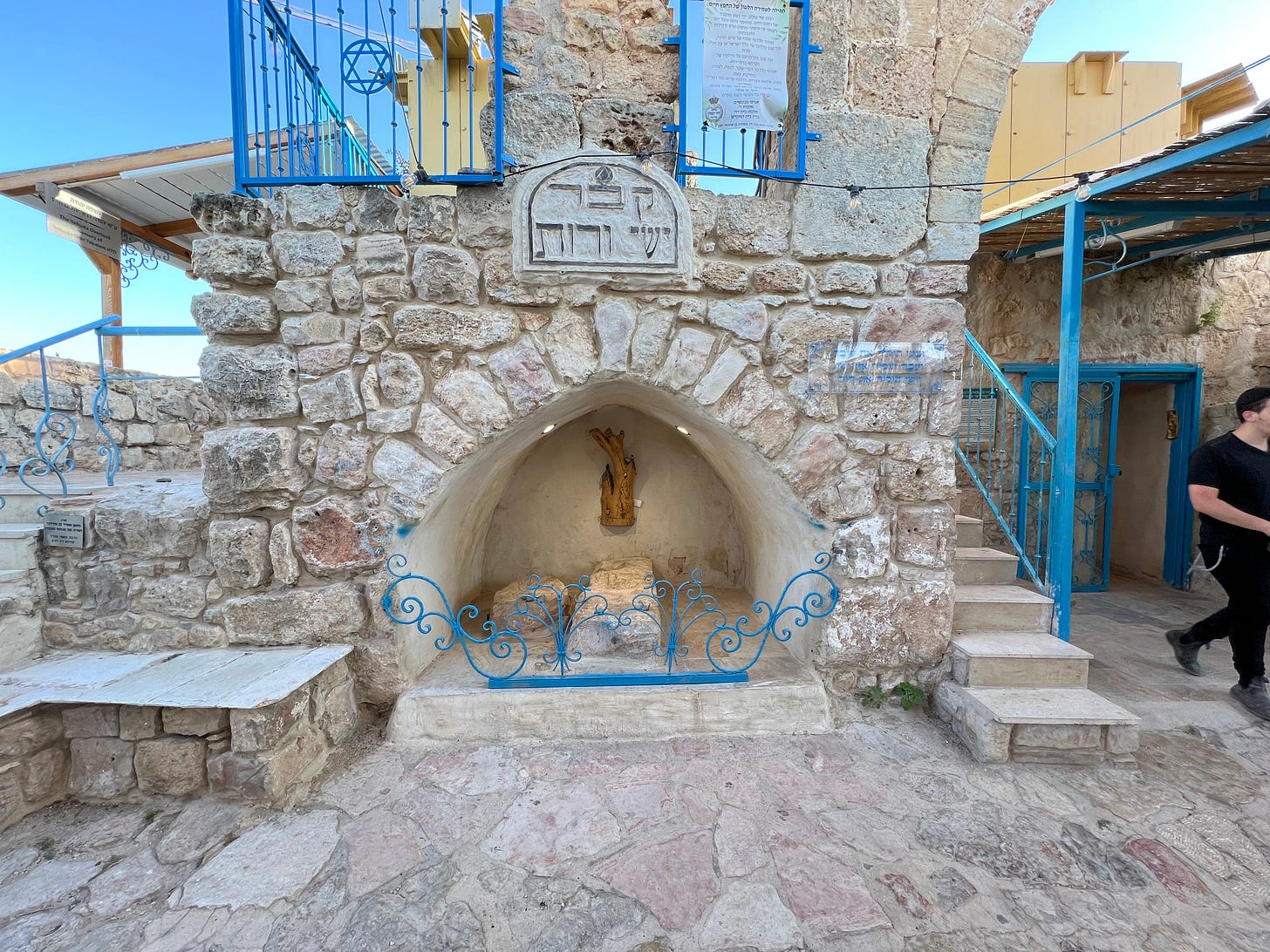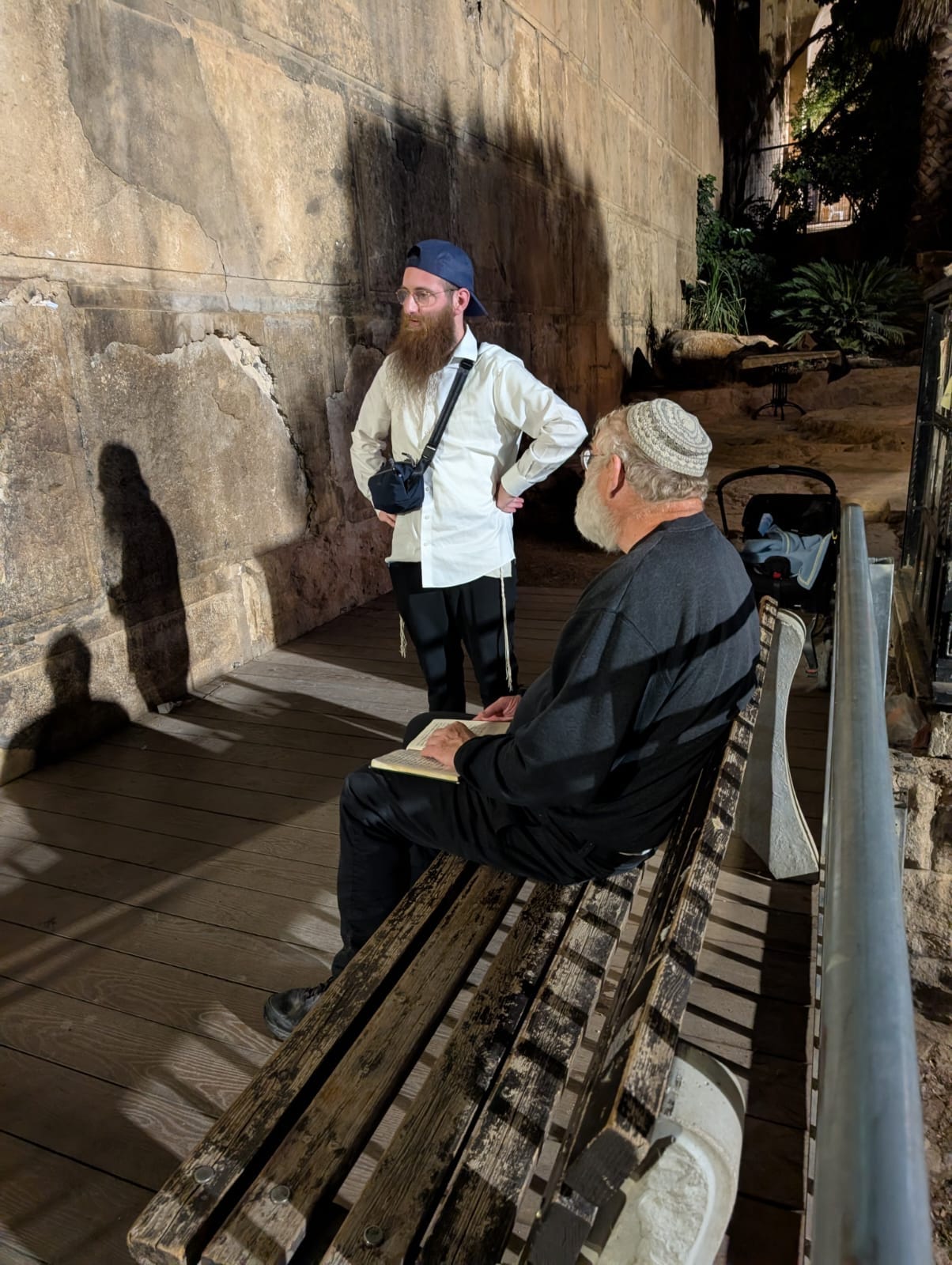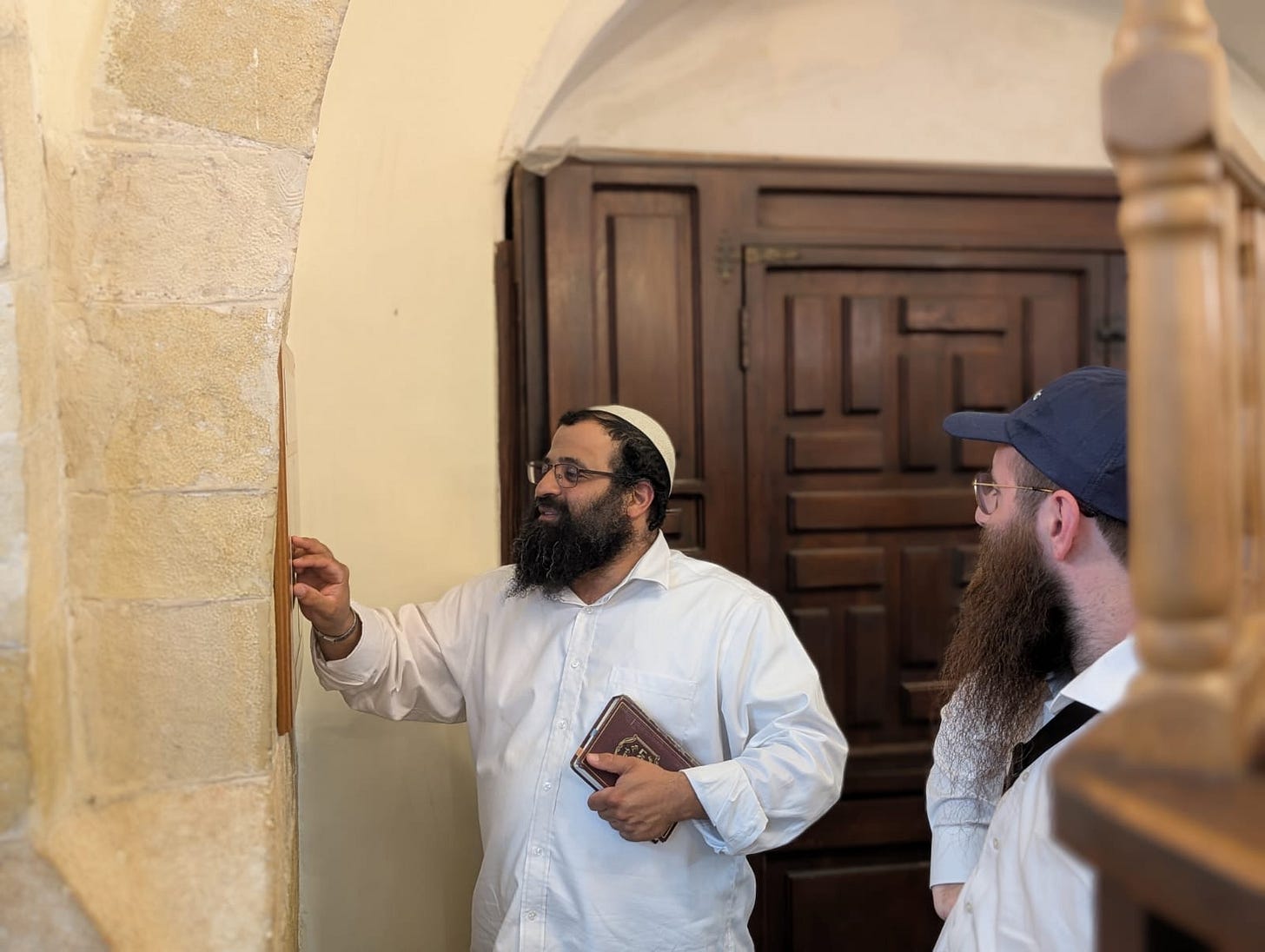Today marked my pilgrimage to one of the holiest sites in Judaism, though it began with what might be the most unsuccessful attempt at French diplomacy since well, who really knows.
After a slow morning of davening Shacharit and generally avoiding any activities worth documenting, my day picked up considerably when I decided to venture out to Hebron to visit Ma'arat Hamachpela. Because if you're going to be stuck in Israel during a regional conflict, you might as well make the most of it spiritually speaking.
The adventure began on my way to the central bus station, where I found myself standing on a crowded bus with my trusty backpack doing what backpacks do best in cramped spaces—invading other people's personal space. Unfortunately, my bag made contact with a woman who immediately launched into a linguistic assault in rapid-fire French. Her face bore the expression of someone who'd just witnessed me personally insult her entire family lineage.
Now, I'm a firm believer that everyone should know at least one cute line in a foreign language—the funnier or more memorable, the better. It's diplomatic currency, really. So I deployed what I thought was my secret weapon: “Je veux des bonbons” (I want candy).
Usually, when I deliver this line—picture a 35-year-old-looking Hasidic man (though I'm actually 26, but who's counting) saying something so delightfully childish—people burst into laughter. It's disarming, endearing, and generally defuses any tension.
This woman was not amused. She gave me a look that could have melted the polar ice caps and the conversation died right there. So much for international relations through candy requests.
I then got to the central bus station, had a strange conversation with a very drunk Ethiopian man, who crashed to the floor as soon as I spoke to him and then took the bus to Hebron. It took about an hour and a half, during which I watched the landscape shift from urban Jerusalem to rolling hills. I alighted together with a Gur Hasid—a young man with that particular earnestness that comes with being part of one of the largest Hasidic dynasties in the world.
“How do we get to the Cave of the Patriarchs?”I asked him.
“Yo, just follow me,” he replied. “We'll get a tremp.”
For the uninitiated, “tremp” is Israeli for hitchhiking, and it's practically a national pastime. So there we were, two hatted figures—his black and chassidish looking, mine Chabad.org and backwards— standing on the side of the road with our thumbs out, looking like the setup to either a very good joke or a very concerning news story.
I told him of my family’s Gur connections and he told me he had no idea what I was talking about. I told him about my great-grandfather being a chavrusa of the Beis Yisrael and he looked at me blankly. Then we shared a cigarette with our thumbs still held out to oncoming traffic.
Then I remembered I actually had a cousin in the area—one of those family connections that proves invaluable when you're standing on the side of a road in Hebron. I called him, and within minutes he arrived in his old Skoda, Benny Friedman blaring at a volume that let all Arabs in the area know that we’re Jewish and vice-versa.
My hitchhiking companion introduced himself as Nuchem David, and we piled into the car like some sort of religious road trip movie. We dropped off Nuchem David at Ma'arat Hamachpela, where I suspect he continued his day with far more spiritual focus than I was about to demonstrate.
My cousin is a shliach in Hebron—one of those remarkable people who dedicate their lives to maintaining Jewish presence in one of our most ancient and contested cities. He gave me what can only be described as the premium heritage tour.
First stop: the old archaeological ruins, where he showed me the historic mikvah that has been sitting there for centuries, waiting for archaeologists to properly appreciate its craftsmanship. Then we visited the tombs of Yishai and Ruth. The site was remarkably renovated. Like, I was blown away. Bravo to the Syrian community for doing what you do best. Whatever that is. Well, philanthropy of course.
Then we saw the newly excavated site where they believe King David's palace once stood. The excavations had begun just a week and a half ago but were halted because of the current war. Nothing says "ancient history meets modern reality" quite like an archaeological dig being interrupted by rocket fire.
Perhaps most fascinating were the stairs where Efron the Hittite supposedly sat when Abraham negotiated the purchase of the Cave of the Patriarchs. These aren't just any old stairs—we're talking Bronze Age construction, the kind of ancient that makes you question what you've really accomplished in your life. What's remarkable is that there's a modern building constructed directly over these ruins, supported by pillars specifically designed not to disturb the archaeological discoveries below. It's like a very respectful architectural sandwich. But still a little jarring to see a building on top of ruins.
They also weren’t blocked off, so I was able to literally walk in the footsteps of my ancestors and I may have liberated a small pottery shard as a souvenir. Don't tell the Israeli Antiquities Authority, but yes, I'm now in possession of what might be a 3,000-year-old piece of ceramic. Include this in the blog? Well, I'm past the point of plausible deniability.
Our next stop was the tomb of Menucha Rachel Slonim, the granddaughter of the Alter Rebbe. My cousin told me her story and about the destruction of the cemetery, and I offered a brief prayer at her matzevah.
We then visited the old Hadassah Hospital, which was genuinely magnificent in the way that old buildings with serious historical weight tend to be. From there, we went to the old Tomchei Temimim, established by the Rebbe Rashab. It's now a massive yeshiva, an impressive looking one at that.
At the Avraham Avinu Synagogue, one of the locals read to me the incredible story about nine men in Hebron in the 1920s who found themselves without a minyan on Yom Kippur. Just when they thought they couldn't pray, an old man appeared and completed their minyan. According to local tradition, this mysterious tenth man was none other than Avraham Avinu. We also stopped at the synagogue of the Mitteler Rebbe.
Finally, we made it to Ma'arat Hamachpela itself, where I davened for a moment on the seventh step. I met a lovely fellow named George who asked me for some money, which I promptly gave him. Turns out he's French, lived in Britain for five years, and now lives in Jerusalem. Our conversation wasn't particularly memorable, but there's something to be said about me paying him for a conversation. A little weird.
I then witnessed a team of IDF soldiers raiding a house right next to Ma'arat Hamachpela. They'd received intelligence about weapons in the building.
On our way to my cousin's apartment in Kiryat Arba, we picked up two young girls who needed a ride. Because that's what we Jews do—we give hitchhikes to those around us. It's like a community service built into the culture.
At his apartment, I stole a bag of Doritos and drank a beer. By 10:30, I decided it was time to head back to Jerusalem, so I caught a bus back to the city.
The day ended on a frustrating note when I ordered food online, got charged for it, but the food never appeared. After a day of touching ancient stones and walking in the footsteps of our forefathers, I was defeated by modern food delivery technology.
And that's where I find myself at the end of Day 10. Thanks for joining me on this journey from French failure to ancient pilgrimage to modern disappointment. Tomorrow's another day in the Holy Land, assuming the food delivery apps get their act together. Until next time!

